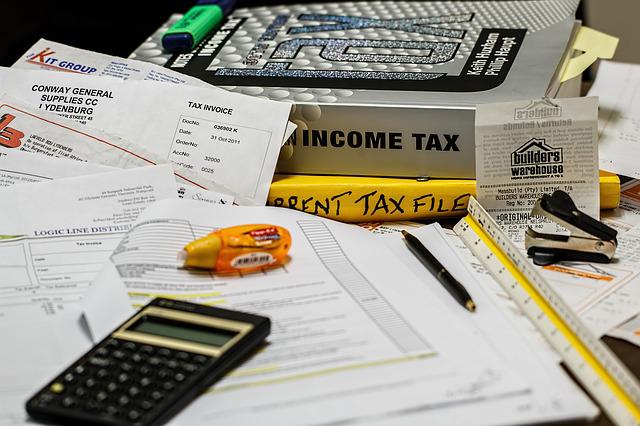From flexible working hours to not reporting to a boss, it comes with many benefits when you are self-employed. However, when you have the freedom to work alone, it also comes with a specific set of responsibilities. One of the primary responsibilities that self-employed individuals -like freelancers, are expected to fulfill is paying quarterly taxes. Know how to calculate and pay quarterly taxes using a reliable quarterly tax calculator without burdening your finance management.
Table of Contents
What are Quarterly Taxes?
Quarterly taxes also go by the name Estimated taxes. It is a type of taxation that you are expected to pay in advance of the tax returns annually. Estimated taxes function on the pay-as-you-go concept. This implies that you are expected to pay the taxes throughout the year. During every quarter, eligible taxpayers pay a specific part of their expected income tax annually. Due to this reason, the payments tend to be estimations.
Regular tax payments will cover Social Security, Medicare, and the overall income tax. Therefore, it is important to know how quarterly taxes break down—the self-employment and income tax. Income tax will follow the same rates as salaried individuals. On the other hand, the self-employment tax is around 15.3 percent. It will help cover Medicare costs (2.9 percent) and Social Security (12.4 percent).
Requirement for Quarterly Payments of Estimated Tax
The tax system in the United States uses the pay-as-you-go concept for income tax. With the given system, taxpayers are expected to pay taxes as they earn income. Therefore, the government can tax W-2 employees with specific withholdings and self-employed workers or freelancers with quarterly tax payments. If you work by yourself as a freelancer or contractor, your taxes will not automatically be taken from your paychecks. Therefore, the IRS goes ahead with collecting income taxes along with quarterly tax payments.
To analyze whether or not a taxpayer should ensure quarter tax payments, here are some important guidelines:
- You estimate owing over $1,000 (post-tax credits) while filing the return for 2022
- You estimate that the tax credits and withholdings will be less than 90 percent of the predicted tax liability for 2022 or 100 percent for 2021 tax liability -estimating it covers all the months of the given year.
If the AGI or Adjusted Gross Income exceeds $150,000 to $75,000, if you are married and filing separately, the requirement is 110 percent. Fishermen and farmers are exceptions to the given requirement. When you are employed in either of the professions and earn around 66.6 percent of the income out of the trades, you only pay the corresponding amount of total tax liability.
While paying quarterly taxes as a self-employed individual can feel intimidating, it can help you avoid a significant bill during the tax period. Moreover, paying quarterly taxes as a freelancer or contractor will make the overall tax payment process highly manageable throughout the year.
Use this widget to calculate quarterly tax:
Do you Owe Quarterly Taxes?
If you are self-employed, a freelancer, a contractor, or own a small business, you most likely owe estimated or quarterly taxes. Typically, self-employed workers feature:
- Sole proprietors
- Independent contractors
- Freelancers
- Full-time or part-time small business owners
- Members in some partnership conducting business -like an LLC
As there are specific employment-specific rules for estimated taxes, there are also some financial rules. The IRS only requests you to ensure estimated tax payments when you owe $1,000 or more while filing the return. As such, the minimum for quarterly taxes drops down to $500 in the case of corporations. However, the IRS still asks for the self-employment tax if the individual net earnings exceed $400.
If you are already paying a sufficient amount throughout the year, you will not be required to pay quarterly. For instance, individuals with a W2 job on top of the 1099 income might be paying ample taxes through the full-time W2 job.
Paying Quarterly Taxes
When you realize that you are expected to pay estimated taxes, you should initially utilize Schedule C under Form 1040 to determine the amount you owe. However, if the total net earnings are less than $5,000, you will have to file the Schedule C-EZ. Both forms can be used for determining the total net earnings or loss.
Then, you can use the subsequent number on Form 1040 to calculate the self-employment tax amount you are expected to pay during the particular year. When you file a joint income tax return, you and the other self-employed individual should calculate the income individually. As such, consulting an experienced tax professional or service provider is recommended to help you calculate the right amount while abiding by the respective IRS guidelines.
You may also like: Technology & How-To guides for Windows
To ensure the payments for quarterly taxes, here are steps to follow:
- Ensure the payment electronically with the help of the Electronic Federal Tax Payment System
- Mail-in vouchers present on the Form 1040 SE
- Use a tax checklist
If you wish to avoid penalties, you are expected to ensure your first payment according to the estimated tax deadline of April 18, 2022. Let us assume that you ensured an overpayment of the tax upon completing Form 1040 or 1040-SR. In this case, the IRS will refund the difference. Any overpayment will be effectively credited towards the quarterly taxes while reducing the overall burden during the next taxation year.
Conclusion
A leading financial advisor or tax calculation service provider can help you prepare a dedicated tax strategy to help minimize the respective tax bill -in the present and future. A financial professional specializing in tax planning can help reduce your overall 1099 income taxes by leveraging your losses. Make the most of your profession and save big on quarterly taxes!
Featured Image by Steve Buissinne from Pixabay




